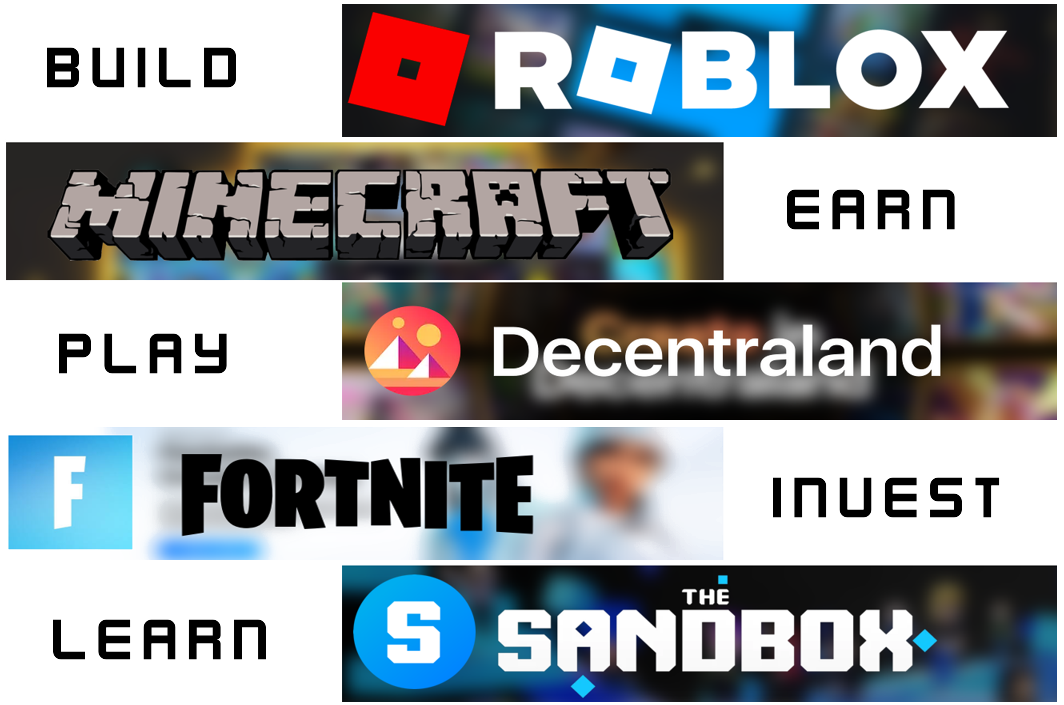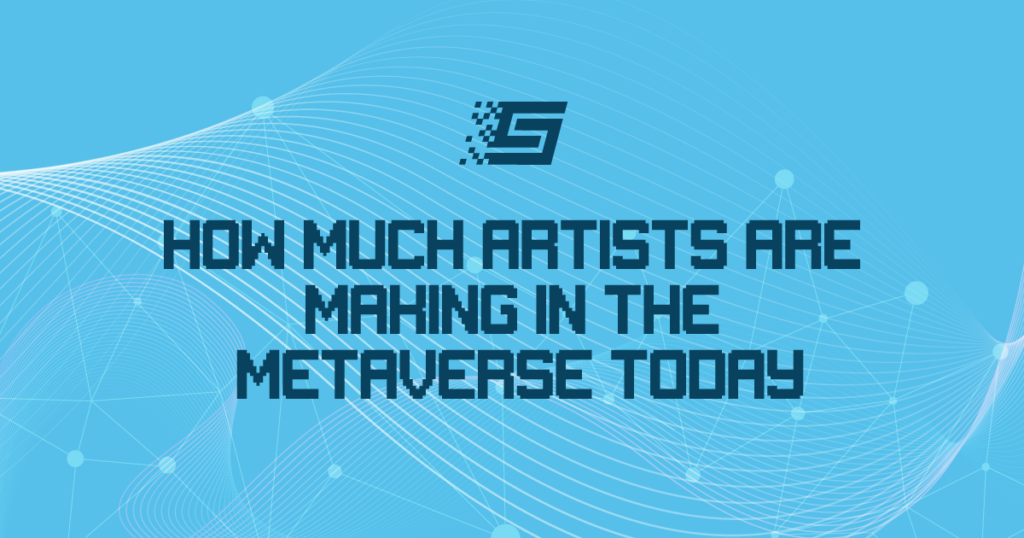How to Buy Metaverse Crypto Coins
What Is The Metaverse?
The term ‘metaverse’ means a virtual world that is facilitated by a host of emerging technologies, including blockchain, VR (virtual reality), and AR (augmented reality). It is an expansive ecosystem with varying properties, including a robust value transfer mechanism, a vibrant community of users, and sometimes a connection to the real world. But what makes the metaverse exciting is the fact that it is ‘limitlessness,’ and anyone anywhere is able to join a virtual community and contribute in their capacity, leading to a diverse ecosystem.
Metaverse crypto tokens are digital assets that are used natively within these immersive virtual worlds.
The blockchain is essential in ensuring a decentralized metaverse. It facilitates the value transfer needed to build economies within these virtual spaces.
Ethereum is one of the more commonly used blockchains to host metaverses, but it is not necessary to use that particular network. A metaverse can exist on a standalone blockchain that is custom-built to support specific virtual universes.
Metaverse crypto coins can serve many purposes within an ecosystem, including:
- Value transfer
- Governance
- Ownership authentication
- Other custom functionalities within specific metaverses
In the following sections, we will consider some of the best metaverse coins to buy, highlight the value they bring to their specific ecosystems, and show you how to acquire them.
Best Metaverse Crypto To Buy
There are several reasons to invest in the metaverse. Particularly, investors will be looking for the next rising currency, and others will be seeking adventure in an intriguing virtual environment.
Below is a list of five popular cryptocurrencies native to disparate virtual environments. Typically, you would need to invest in them to have the chance to interact within their ecosystems.
The Sandbox (SAND)
The Sandbox is a gaming metaverse on the Ethereum network that allows players to own, build, and monetize various in-game assets, including land, tools, animals, and even people. All these items exist as NFTs (non-fungible tokens), giving unique ownership to the creators.
These assets can be traded on the Sandbox marketplace, creating a vibrant economy that is facilitated by the native cryptocurrency SAND, which is used to partake in activities such as:
Land ownership – through NFTs, participants are able to buy, sell, trade, or hold LAND in the Sandbox, similar to how property ownership works in the real world.
Building games – besides the ability to build tools and other virtual in-game items, you can also build games within the Sandbox metaverse to enhance other players’ experiences. The games can also be traded on the marketplace.
SAND is an ERC-20 token that provides value exchange, governance, and the opportunity to earn passive rewards through staking.
ApeCoin (APE)
ApeCoin (APE) is an ERC-20 hosted on the Ethereum blockchain network that is the native asset for the newly launched Ape Ecosystem. It comprises a decentralized community of BAYC (Bored Ape Yacht Club) and MAYC (Mutant Ape Yacht Club) owners.
To be a member of the Ape Metaverse, you just need to own one of BAYC or MAYC’s NFTs.
Holding the ApeCoin provides the following benefits within the APE Ecosystem:
Governance – holders of the token can participate in the APE Improvement Proposal Process when voting within the ApeCoin decentralized autonomous organization (DAO).
Access – ApeCoin holders will be able to access exclusive items and parts of the ecosystem that host games, sell merchandise, and run events that would otherwise be inaccessible.
Incentive – third-party developers need ApeCoin to develop and deploy custom-built games or services on the ecosystem.
Decentraland (MANA)
Decentraland is a metaverse platform powered by the Ethereum blockchain. It is one of the earliest metaverses that have been created, with its development history dating as far back as when Ariel Meilich et al. released the whitepaper in 2015. Following the last five years of active development, the core team made Decentraland available to the public in February 2020.
The project’s name, ‘Decentraland,’ is an amalgamation of two words – decentralized and land. It is essentially a large piece of land subdivided into virtual plots that are sold to initial investors. The plots can be used for all kinds of virtual development, including business premises, entertainment joints, and event locations.
The MANA token is a facilitative asset used for value transfer, especially buying and selling land, gaining access to exclusive goods and services, and making payments on the Decentraland ecosystem.
Axie Infinity Shards (AXS)
Axie Infinity is a popular P2E (play-to-earn) gaming metaverse powered by the Ethereum blockchain. Axie Infinity was inspired by the two popular conventional games, Pokémon and Tamagotchi. Created by the Sky Mavis team in 2018, it involves players collecting, breeding, trading, and battling in-game creatures called ‘Axies,’ which are basically NFTs.
At the center of the Axie Infinity ecosystem is Axie Infinity Shards (AXS), which is an ERC-20 token that serves the following functions:
Governance – AXS holders are able to participate in the governance of the Axie infinity ecosystem by staking their tokens and voting on upgrade proposals and how the community treasury is spent.
Value transfer – AXS is used as payment for Axies traded in the NFT marketplace and can be used to access exclusive auctions/sales in the market.
Staking – besides earning the right to vote on governance issues, staking AXS also enables token holders to earn rewards in the form of newly issued AXS tokens.
Enjin Coin (ENJ)
The Enjin Coin (ENJ) is the native cryptocurrency of the Enjin platform. The company was co-founded by Maxim Blagov and Witek Radomski in 2009 when blockchain technology was still yet to be released.
Back in July 2017, the Enjin team announced the launch of the blockchain-based gaming platform and conducted an ICO (initial cryptocurrency offering), raising about $19 million by selling their ENJ tokens. One year later, in June 2018, the Enjin gaming metaverse was launched on the mainnet.
The Enjin ecosystem is based around its community members who create various sorts of in-game items, including digital art, custom tokens, virtual real estate, and gaming characters, among others.
The in-game assets are created through a simple process that includes using the minted assets within the Enjin ecosystem, locking your ENJ tokens (and then mining in-game assets which accrue their value from the locked ENJ), and melting assets (destroying them in order to receive back the locked ENJ).
The ENJ token also serves as a payment tool, a medium of exchange, and a governance token.
How To Buy Metaverse Crypto Coins
Getting hold of metaverse crypto coins is simple. Generally, the process entails a few straightforward steps, but they could vary depending on which assets you are interested in acquiring. The process is as follows:
Step 1 – Identify A Trading Platform
There are hundreds of trading platforms, but it is best to stick with the leaders in terms of assets supported, trading volume reported, and ease of use.
Some of the leading platforms include:
- Binance
- Coinbase
- KuCoin
- Kraken
- UniSwap DEX
- FTX Global
Step 2 – Fund Your Trading Account
Once you’ve created an account on one of the digital asset trading platforms from the previous step, you will need to transfer some fiat currency or crypto to that exchange.
Decentralized exchanges (DEXes) let users swap directly without transferring assets to another account. They are more convenient but less user-friendly.
Depending on the platform you use, you may need to trade your fiat coins for another type of crypto, such as ETH, to buy your metaverse crypto coin.
Step 3 – Trade
Once you’ve identified the trading pair you need, make the trade, convert your fiat to crypto, and then to the metaverse crypto of your choice. Alternatively, directly swap your fiat currency with your token of choice.
Step 4 – Transfer Them To An External Wallet
Most metaverse platforms require that you hold their native tokens within a supported wallet. Many of them are based on Ethereum, but if you’re interested in participating within an obscure metaverse that isn’t on a leading blockchain network, you will need to transfer your coins to their native crypto wallets.
For most metaverse platforms, a MetaMask crypto wallet will suffice to ensure that you are able to hold your coins safely and connect to the virtual universes with ease. Finally, you will need to send your assets from the exchange account to the wallet to start your metaverse journey.
Final Thoughts
Metaverses are gaining a lot more popularity as blockchain technology is gaining more recognition and acceptance. These virtual universes come with several benefits, which include a source of entertainment, a sense of belonging to a global community, and the opportunity to earn.
Although still in the early stages of development, metaverses are set to become major players within the blockchain scene, and some owners of metaverse crypto coins could be in a position to contribute towards that. As we have outlined in this guide, it’s not only easy to buy them, but it could also prove to be worthwhile, depending on your goals.


